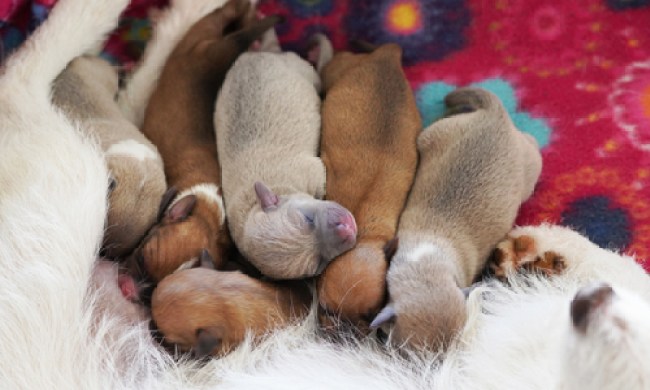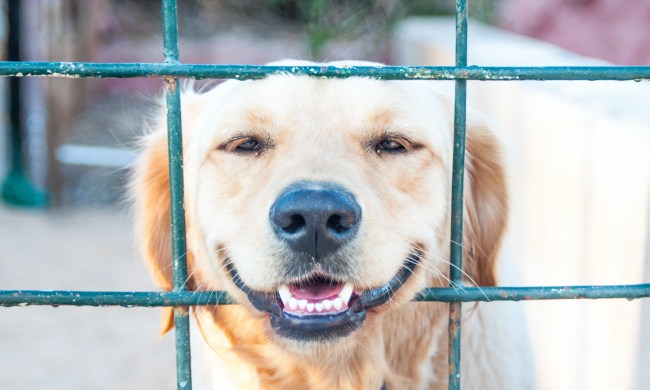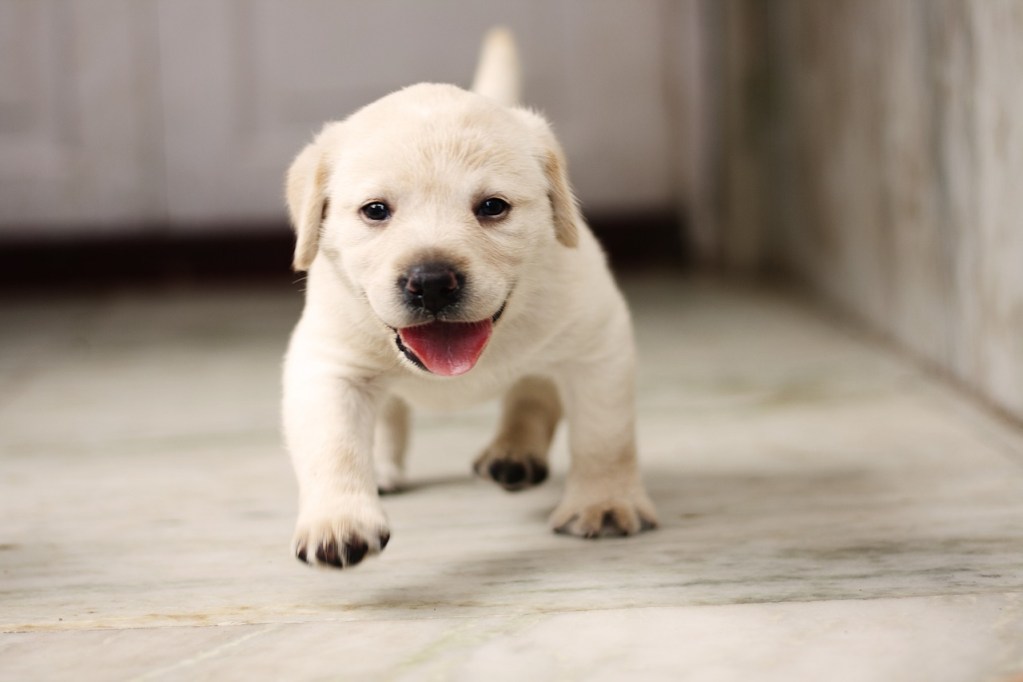
When you first bring home a new puppy, you’ll have so many firsts to look forward to. Some milestones — the first accident, for example — aren’t quite as cute as the others, so that’s why you’ll want to start training with your pup as soon as possible. Understanding puppy training stages will help you break down all your goals into realistic steps, making you and your new best friend more likely to succeed.
Remember, training your pup is just one important aspect of their well-being. Ensure you’re taking care of their diet, health, and happiness, too. Good luck and keep reading to learn about a puppy training schedule.
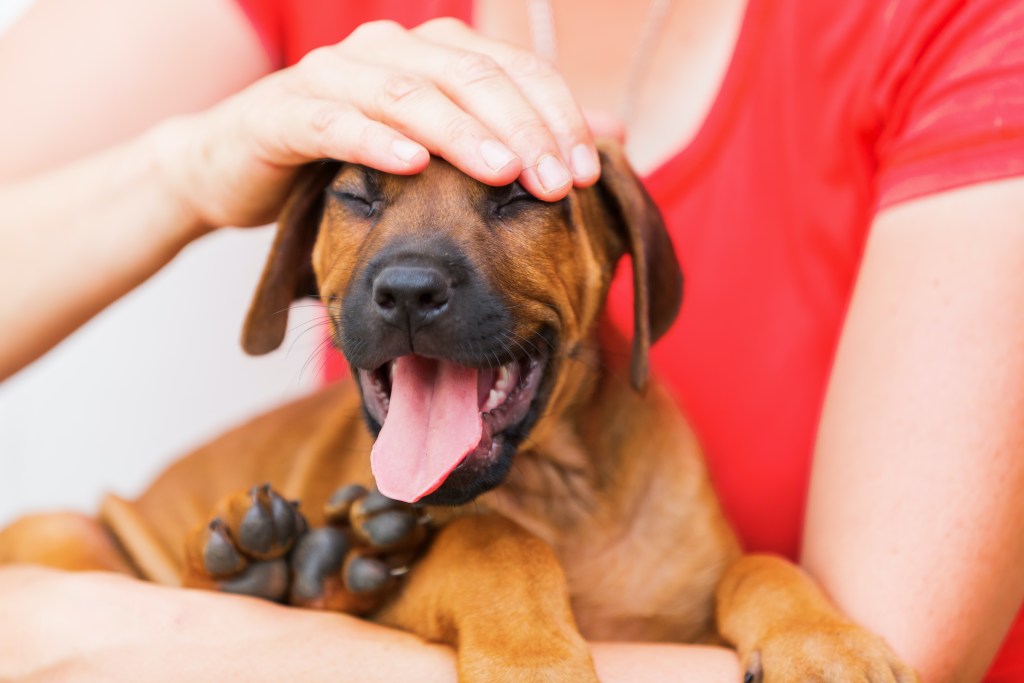
Here’s your ideal puppy training schedule for puppies 8 weeks of age and younger
It’s important to establish a routine as soon as you bring your puppy home. Not only will this ensure that you and your pup have every need met, but it also will let your new dog become more familiar with their environment. As dog trainer Ken McCann said in his YouTube video guide for puppy training, “You’ll be setting them up for success,” especially in potty training. Make sure to supervise while they’re outside, too.
Here’s another idea: Luring your new pup to you with a delicious treat is a great first step toward bonding and training. At this point, they’re working purely on instinct, but they’re learning the reward value of treats as well as a praise word — something like “yes” or “good” to let them know they’re doing well. Make sure to use this word as you continue training!
This also gets your pup used to working for a treat, which builds motivation and confidence. Negative reinforcement won’t teach anything but a feeling of unease at this age, so it’s a good idea to focus on rewards instead (and always). Now that they know that following you gets that reward, they’ll soon be ready to move on to the next stage.
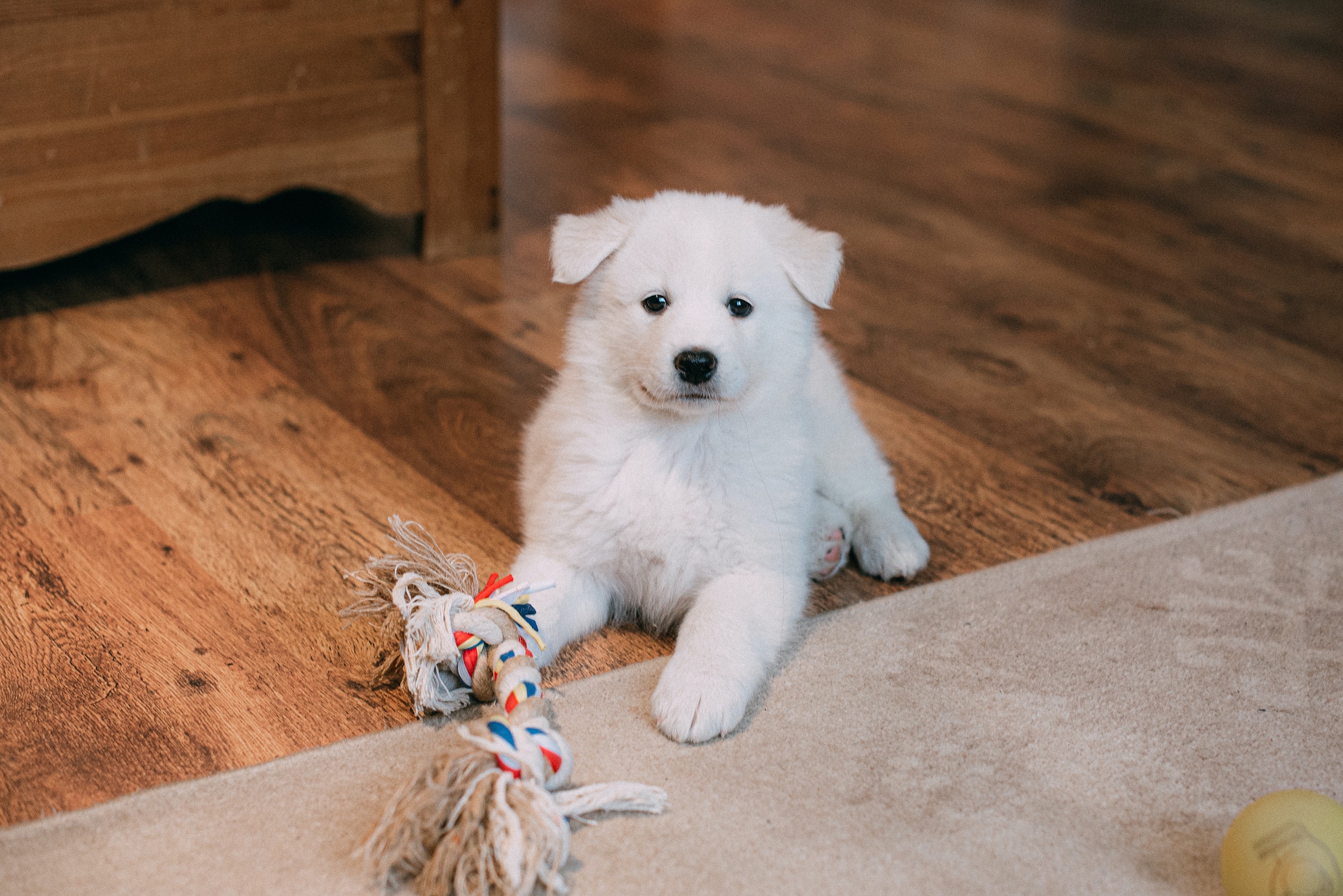
When your puppy is 9 weeks old, try to stick to a training routine that looks like this
By 9 weeks, your puppy has had time to adjust to their new environment, notes the American Kennel Club. They’re probably gaining confidence by the hour as they learn what their little body can do, so it’s extra important to keep your fur baby supervised during this developmental stage.
Your puppy’s name should be used as a tool for training at this age. Instead of using it at every chance to get them used to it, use it sparingly to grab their attention — and then reward them for responding. This positive reinforcement will help the name stick, so they’ll be eager to respond when they hear it.
Keep your routines consistent to give your young dog a chance to learn new habits. For example, knowing by the setting sun that it’ll be time to go potty soon could determine whether your pup chooses to potty in the house.
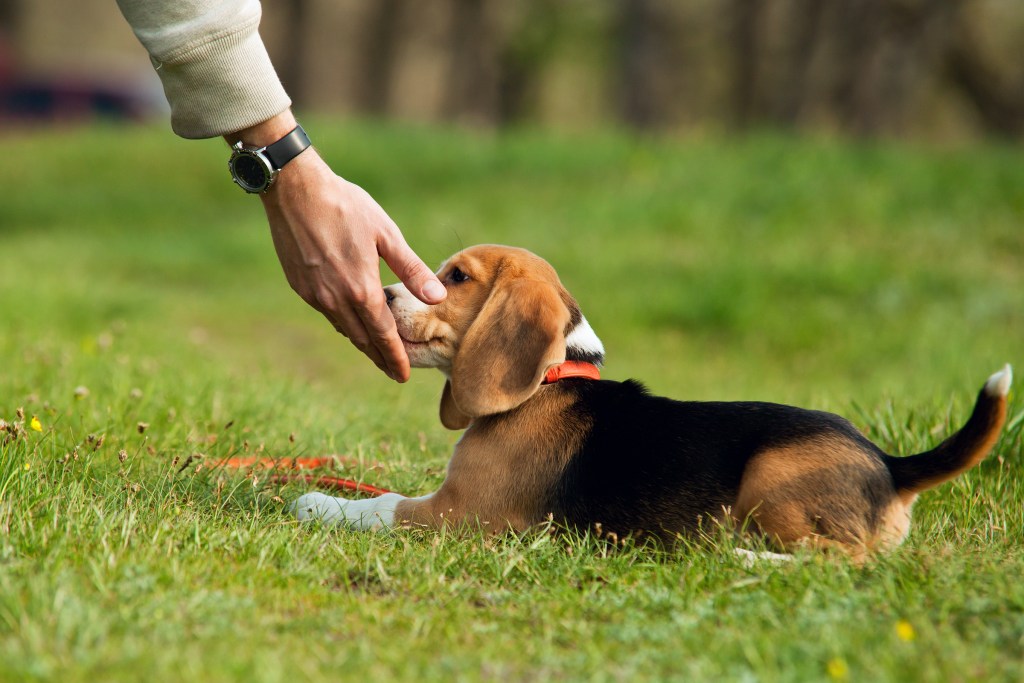
At 10 weeks old, your dog will be ready for more challenging training. Ready to try something new?
This is a great time to start increasing the challenge of your pup’s commands — using baby steps! If you haven’t already, have your puppy sit (use a treat to lure them into position by raising it from nose level to above their head) before receiving every meal. This further integrates training and teaches your puppy to look to you before indulging.
If you’ve been luring them toward you with a treat, try leading them a few steps back and forth, or even in a circle, for more of a challenge. Use the word “come” when you lure your pet around with a treat, and soon they’ll start to understand. Don’t forget to praise your pet with words and a treat every time they complete a command. Yes, every time!
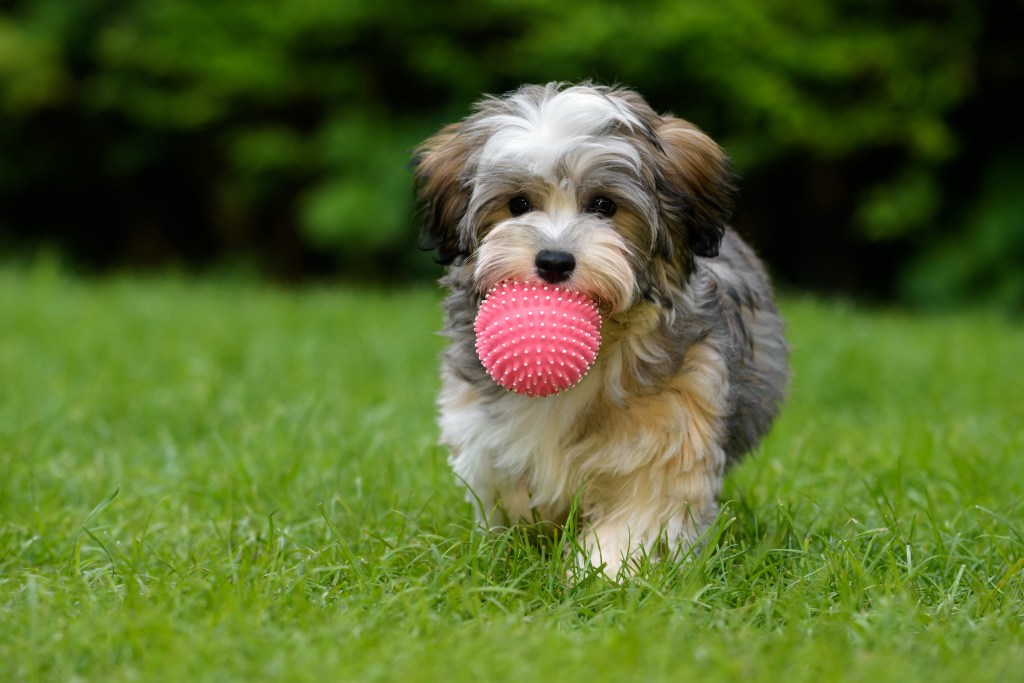
When your fur baby is 11 weeks of age, try this puppy training schedule to keep them busy
During this time, keep practicing everything you’ve introduced to your pup. Have them wait a little longer before getting rewarded, teaching a bit of patience at a time. Take each “sit” a step further by practicing “down” (lower the treat down toward the floor) or take a few steps away while your pup works on patiently sitting.
It’s a good time to introduce a collar, harness, or leash if you haven’t already — though you shouldn’t jump right into wearing it. Baby steps are a good idea when trying anything new with your fur baby! For a first step, let them sniff their new fashion accessory.
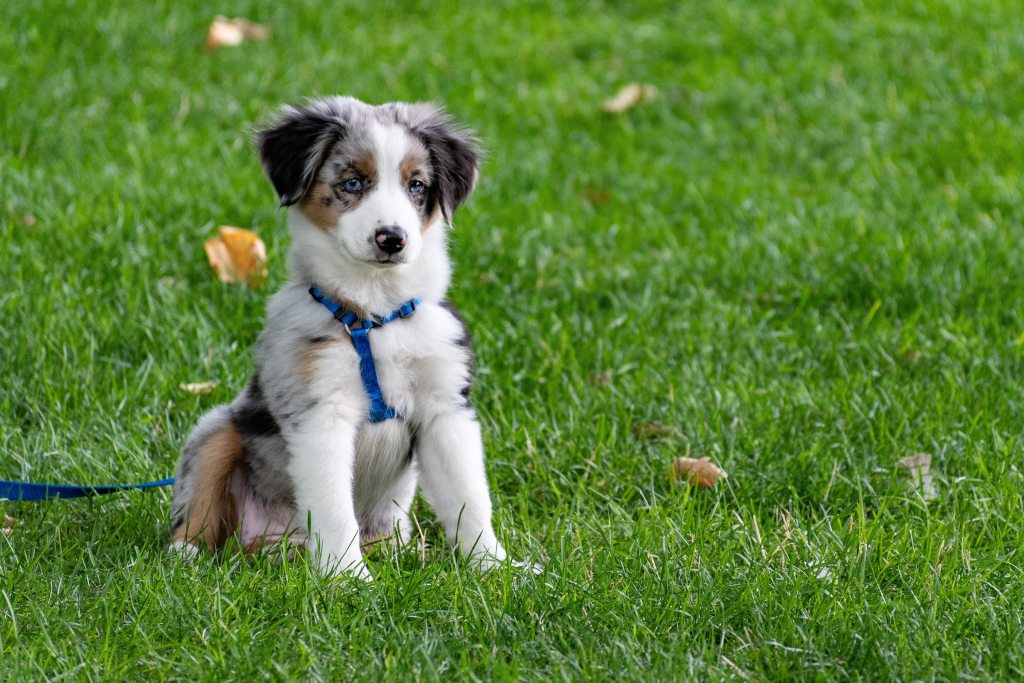
This is the ideal way to train a puppy that’s about 12 weeks or 3 months old
The American Kennel Club lists this age as an ideal time to expose your pup to new people, places, and things. Once your vet gives you the go-ahead, it’s important to socialize your puppy. Doing this in short, calm trips outside will help your fur baby build confidence as you go.
As your pup gets to know other dogs and people, practicing commands like “leave it” and any others you’ve been learning is extra important. This will give you more control over playtime should anything get out of hand. Generally, pups can be great at giving one another a verbal signal — a little yelp — if a sibling or playmate bites too hard.
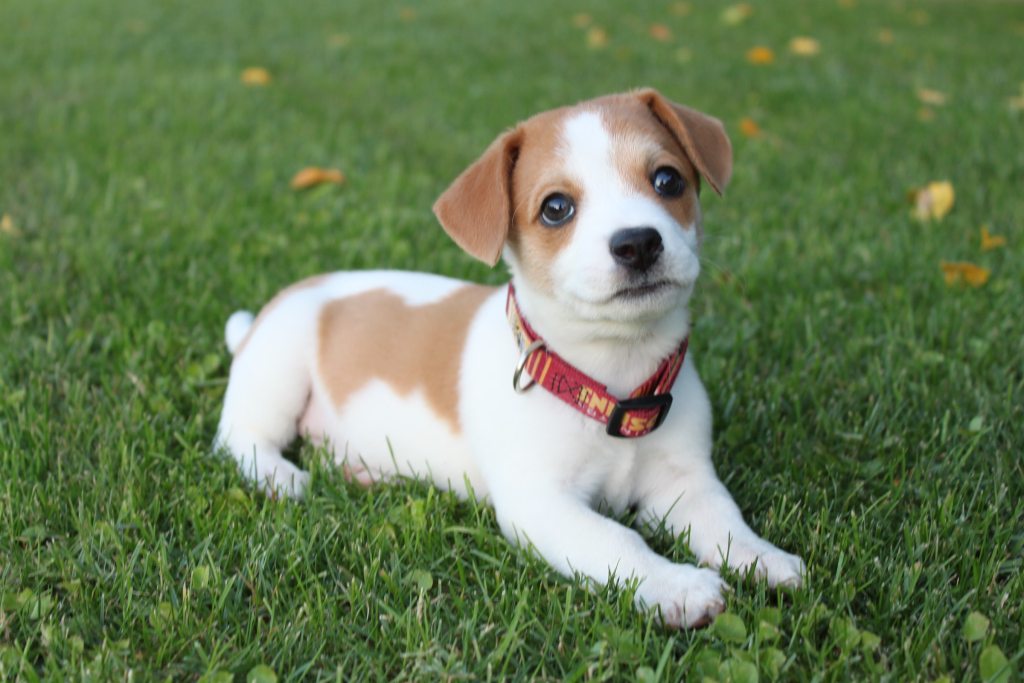
What if my puppy isn’t following this training timeline? Try not to worry if you have a late bloomer
Remember, every dog runs on their own body clock, no matter their age. No two pups develop at exactly the same rate, so don’t feel discouraged if your furry friend is technically “behind” in any area. Think about the way human children grow and learn — it’s not a linear path. Some skills may click more quickly than others, and that’s perfectly normal. If your puppy isn’t responding to their name, for example, they may be excelling in athletics or social skills.
If you’re truly concerned, it’s never a bad idea to let your veterinarian know what’s going on. They’re here to help you find your way along this crazy path of puppyhood, and they’ll have ideas you may not have heard before. Sometimes, though, all it takes is some time, patience, and practice.
You can do it, pet parents!

